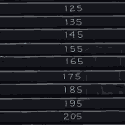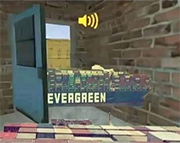|
I feel at the very least they should get a dacha and a sinecure. Obviously never actually trust them with anything, but we want it to he clear that betraying the reactionaries will be rewarded. (As long as you can actually deliver)
|
|
|
|

|
| # ? May 29, 2024 04:34 |
|
They can have a reduced sentence in whatever humane military prison we stick them in. And an extra pudding cup in the mess hall.
|
|
|
|
|
Asterite34 posted:They can have a reduced sentence in whatever humane military prison we stick them in. And an extra pudding cup in the mess hall. Yeah this.
|
|
|
|
They can have nice houses in the countryside. In California's Santa Barbara county (near Vandenburg which they were nearly ready to nuke until clearly faced with overwhelming opposition). Or perhaps the reduced sentence. Whichever makes them feel safer.
|
|
|
|
In the students office of the Intercosmos Academy, Agripin Antonov submits his proposal with shaky hands. This is the culmination of the ceaseless effort by him and his classmates after the events of the GLADIO attack on the Comitern. Iron Curtain - A vision for the future Comrades of the revolution. It is my pleasure to present the efforts of the Interkosmos class of 82's efforts of this past week. We have all lost in the events since the attacks, we all feel the uncertainty of the future, but we must not harbor despair, rather we must steel ourselves for the harsh reality that our dreams of a peaceful future in the cosmos are shattered and we must once again take up arms to protect the revolution. To this end we present the following design for a patrol craft that will carry the iron will of our people into the cosmos and protect our loved ones from enemies foreign and domestic. Our design philosophy uses the cutting edge of our current technological accomplishments in weapons and tracking. A full four batteries of quad mounted gauss cannons on a turret mount will fire a veritable hail storm of bullets at any moving target that comes within range, while a smaller dual mounted laser turret gives effective and accurate power projection against nimble targets of a similar size. Capable of targeting both larger craft and missiles, this ship will be an effective deterrent against aggression while keeping in line with the specifications, allowing it to be classed as a patrol craft rather than a war vessel. Its appreciative accuracy profile against fast moving targets also allows it to supplement the planetside defenses and provide protection against further missile attacks, while its range will allow it to range as far as Mars and the inner system. I hope, comrades of the voting bodies, that you will share in this vision and commit to the construction of our vessels. We at Interkosmos are eager to begin work. 
|
|
|
|
Moscow Interkosmos Academy As Agripin Antonov gets up from the mess table, he wipes his mouth with a napkin and is about to crumble it up as he gets up. However on the back of the napkin are some scribbles, he looks at them and goes "huh". He hands it off to the information desk. 
Demiurge4 fucked around with this message at 09:09 on Dec 14, 2021 |
|
|
Demiurge4 posted:Moscow Interkosmos Academy Some quick math puts this at... about 290 days of travel time round-trip out to Minerva, maybe a little longer if we wanna take some detours and check out Pluto and Eris and other Trans-Neptunian Objects. Minerva is so far out compared to any other known site of interest that even the farthest diversion would at most tack on another 90 days or so, still well within operational limits.
|
|
|
|
|
The New Moscow Times USSR Holds First Party Elections Since Membership Rules Change-Final Changes Draft January, 1984 Voting to fill positions in every level and body of party government is underway since the momentous decision by party leadership of the changes to the rules for membership in the Communist Party of the USSR last year. With the now very low barrier to entry, membership in the party has soared to unprecedented levels. It is estimated that 78% of all USSR citizens are now members in good standing. This number falls short of Presidium goals and far exceeds the predictions by international observers. Long discussions between Comintern officials, political scientists around the globe, and newly minted members of the party have revealed 5 major tendencies (any party member will tell you it'd be in far too much bad taste to call them "cliques" or "factions" or "wings", what's next, multiple political parties?) that have the potential to achieve political dominance under the new rules. The Internationalists Young no more, this group consists of The Technophiles The Technophiles is an exonym for a large constellation of research groups, enthusiasts, The Old Guard The Old Guard is what remains of The Francophiles The Francophiles draw their ranks from student radicals, junior diplomats, and prominent members of the cultural sphere. They strongly admire the French The Reformists The Reformists draw their ranks from journalists, human rights activists, and As the first ballots are deposited, the world holds its breath. Note from the Editor: Andrei, we've talked about the problems with you having such an obvious bias before. If you can't stop slandering potential new heads of government, I'll limit you to writing reviews of doner kebab stands and street performers until you're older than Lenin.
|
|
|
|
That link above is to a google form to decide between the groups described. Go vote! Polls close whenever I wake up on the 18th. If there's a plurality then there's going to be some sort of horrific coalition situation for me to inflict on all of you. Hooray!
|
|
|
|
I voted for reformists
|
|
|
|
 Somebody asked for your existing medals before designing some of their own, and here they are. Almost all of them, with the exception of your long service medals which take the form of circular metal pins, are portrayed as ribbon bars created by the Aurora Ribbon Maker tool: https://aurora2.pentarch.org/index.php?board=283.0 To keep from delaying things too much further, if no one has submitted anything by the time you're done voting on ship designs I'll just throw some together myself. Speaking of which: Pirate Radar posted:I thought that's what it meant, I just hoped it wasn't a call for qualitative parity! I'm not sure I've achieved that, so these designs may be called unsuitable. These are the only two military designs that can actually be built (the third depends on gauss weapons and laser weapons, which you do not yet have), so we'll quickly vote between these two. We'll just do this one in the thread. The Napkin-class is automatically adopted. No Asteroid Mining Testbed design is submitted, so a committee of academicians designs one, which may be a bit weird and suboptimal. Vote for: - A. the Heavy Fighter. - B. the Fast Attack Craft. Voting will remain open for about two days.
|
|
|
|
On second thought, rereading their description a little closer, I kind of want to change my vote from the reformists to the francophiles, even if that's a little irrelevant considering. Edit: actually, make that the internationalists. NewMars fucked around with this message at 14:58 on Dec 15, 2021 |
|
|
|
B. the Fast Attack Craft.
|
|
|
|
Oh yes, also B. Fast Attack Craft.
|
|
|
|
B, Fast Attack Craft
|
|
|
|
|
B, Fast Attack Craft.
|
|
|
|
Changing my vote to A
Affi fucked around with this message at 08:32 on Dec 16, 2021 |
|
|
|
B, Fast attack craft.
|
|
|
|
B, Fast attack craft.
|
|
|
|
B, Fast Attack Craft
|
|
|
|
B, the fast attack craft and whoops about the mining vessel(s).
|
|
|
|
B, Fast attack craft
|
|
|
|
A, not fast attack craft because goddam it people
|
|
|
|
A, being able to construct these military vehicles and get the training and organizational know-how together is going to be a lot easier if they can be made on the ground in large amounts, without taking up invaluable shipyard time. Its highly unlikely this first generation of combat craft will actually see combat and even if they do the conflict would certainly be confined to the earth sphere of influence.
|
|
|
|
Changed my vote. But basically I wanted a ship that could at least reach Mars.
|
|
|
|
Also voting for A.
|
|
|
|
Voting for A. Our very first military ship is bound to be crappy and become obsolete as new technological breakthroughs are made, so let's start small and preserve shipyard space.
|
|
|
|
Voting is closed, the fast attack craft concept wins. Going to aim to have the year started sometime this weekend.
|
|
|
|
The FAC design could be better optimized (less deployment time, smaller reactor) but I expect a Mk.II version of it will happen eventually and I’ll hold off on optimizing it for now. If we research better capacitors in the middle of the production run I’ll submit a design revision incorporating that and any other improvements we research.
|
|
|
|
Option A is certainly easier to mass produce without tying up our shipyards, but 1) it's not like we're using them for anything else at the moment, and 2) it might ease international relations to have our war vessels more explicitly deep-space-focused so it doesn't just look like us building a bunch of fighters that double as orbital doomsday satellites. That being said, and maybe I'm just stupid, but is there a reason we can't do both? Our mandate is to build 10 armed spacecraft, it doesn't specify they all need to be the same design. If we're looking to use this as a test bed for weapons systems and a chance to gain organizational experience with warships, why put all our eggs in one basket? It's not like they use competing resources, design A uses fighter factories and B uses the shipyards. Build a half-dozen or so fighters to act as a close range rapid response Home Guard and a couple of the FACs to act as patrol craft?
|
|
|
|
|
Communist Party of the USSR Election Results The Technophiles win a plurality of seats at 36.5% of the vote. The Internationalists win 28.8% of the vote. The Francophiles win 19.2% of the vote. The Reformists win 11.5% of the vote. The Old Guard gain only 4% of the vote. The Technophiles will rule in coalition with the Internationalists, with the Internationalists mostly restricting themselves to foreign affairs. Out of respect of his service, and a certain overlap of opinion, the Secretary General will retain his position. A new constitution for the USSR will be drafted. In order to secure a broad base of support for the new constitution, clauses increasing the respect for local decision making will be established. The limits of state authority in the lives of individual citizens will be clarified, including making it compliant with the Comintern laws regarding the rights of the individual. A new era of rational government has arrived!
|
|
|
|
From: Design Studio “Left Bank” To be released to: Delegates Only TRÈS SECRET DÉFENSE Next Steps Even as we begin producing our first armed spacecraft we must continue to look into the future. Our initial designs have clear room for improvement, so we can already forecast the existence of a Bloc 1bis version of our FAC design, with better capacitors and a higher rate of fire. This would require a 50% larger reactor as well, so there will be tradeoffs in some areas. Past this point we know less. For a range of outside perspectives on theoretical spacecraft designs we are thankful to correspondents from throughout the Comintern, with whom we have discussed some unclassified aspects of these technologies and processes via Internetwork bulletin boards. We also thank the faculty and students of Intercosmos Academy for putting forth several suggestions for armed spacecraft using as-yet undeveloped weapons technology. Comrade Antonov of Intercosmos suggests Gauss cannons (coilguns) as alternatives to railguns. The idea has clear merits. While no working coilgun of the right size and capabilities has yet been built, the technology is known and there should be no theoretical obstacles to building such a device. Coilguns have inferior performance to railguns but require less energy, doing away with the need for a dedicated reactor powering the weapon. They are also small enough to be mounted in turrets. This is seen as important when creating larger ships. Some of our imaginary spacecraft are larger and slower than the FAC design which has been accepted. As a matter of consensus among members of this design studio, we still regard these ideas as untested, but coilgun turrets would help increase their viability. If Congress decides to direct funding to this area, a military coilgun could almost certainly be constructed. Object A’s existence reminds us that a large armed spacecraft must expect to come under attack from small, fast-moving, missile-armed craft. Coilguns mounted in quick-rotating turrets would be able to defend such a ship from both fighters and missiles. We have included such weapons in our theoretical designs for a hypersonic missile craft, for instance, for the purposes of close-in defense. Coilguns can also be miniaturized to the point that they become possible armaments for very small fighter craft, of the 250 ton range and below. We have imagined two vessels that might fit near-future needs. Neither of them are within our current capabilities to construct and field; both would require an expansion of our naval shipyards, plus extensive research into and implementation of wholly new equipment. It is likely that neither design will reach production, or at least, not in these forms. These facts notwithstanding, we believe it is helpful to discuss possible avenues of future development before we reach the point of needing or desiring such ships.. The first is a support vessel that could extend the functional range of other, smaller ships. This “escort carrier” would not be intended to go into battle itself; rather, it could carry up to 1,000 tons of other ships (that is, multiple fighters or one FAC) from one place to another. As our FACs are not meant to cross very long distances or operate far from shore stations for extended times, this carrier would increase their possible effective range significantly. The design also carries a modest active sensor and two twin-coilgun turrets. quote:Caravan class Escort Carrier (P) 4,692 tons 99 Crew 485.6 BP TCS 94 TH 136 EM 0 The second is envisioned on the same hull, albeit lengthened enough that even the expanded Salyut Yards would not be able to construct it. It has most of the same equipment as the escort carrier. However, instead of hangar space, it has a cluster of six reloadable missile tubes fed by a large magazine. Missile armament is envisioned to be 46 (6 in the tubes, 40 in the magazine) hypothetical M-XX missiles, roughly the size of the ubiquitous Soviet-produced tactical ballistic missile known as the R-17, or “Scud” in Western sources. quote:Missile Study class Missile Frigate (P) 5,047 tons 143 Crew 516.8 BP TCS 101 TH 136 EM 0 quote:Missile Size: 3.00 MSP (7.500 Tons) Warhead: 1 Radiation Damage: 1 Manoeuvre Rating: 13 Since placing fission weapons in space is a politically sensitive matter, we do not expect that this design would be adopted even if the necessary material conditions enabling its construction were present.
|
|
|
|
Is the Outer Space Treaty in effect in the LP timeline? And is it identical to the treaty in our timeline?
|
|
|
|
Boat Stuck posted:Is the Outer Space Treaty in effect in the LP timeline? And is it identical to the treaty in our timeline? I think this has come up but I can’t remember the answer. We’ve also passed some laws about space weapons but their wording hasn’t been tested yet.
|
|
|
|
Interkosmos station attack – final report Condensed version for press release. Full text available at request Overview of Interkosmos Station The stations core consists of a cylindrical structure constructed from a geodesic structure of tritanium-aluminium trusses, with key structural elements manufactured from duranium-based alloys. This structure served initially as a small yard for space-borne construction but was relegated to a fabrication and storage area during subsequent expansion and modification of the station. Living space consists of several toruses rotating on rails on the central cylinder, simulating a gravity of .6g on the outer decks. Around the equatorial plane of this main structure a high-strength truss manufactured form a neutronium-duranium alloy forms a hexagonal ring onto which the slipways were mounted. The main docking-station was located on the main-cylinder, on the side arbitrarily designated as 'south pole'. The opposing 'north pole' mounted a set of nuclear reactors and thermal radiators, satisfying the immense power demand of the station. At the time of the incident two slipways were in use, with a third, Slipway C, in the final stages of construction. Each slipway is constructed upon a truss-work manufactured from tritanium-aluminium-alloy, with key structural members strengthened by incorporating duranium and neutronium into the alloy. This geodesic structure was covered by lightweight aluminium sheets. An irregular assembly of storage-containers, crew facilities, workshops and small docking facilities was mounted directly on the trusswork. A network of rails allow the transport of heavy loads as well as the movement of large pieces of manufacturing equipment, namely electron-beam welders, cranes and attachment structures for pressurized working environment. This pressurized working environment consists of large tents pressurized to approximately 200 millibar, using waste gasses from various manufacturing processes. This allows shipyard personnel to perform work requiring high levels of dexterity, as spacesuits utilizing 100% oxygen as a breathing gas perform in pressure-equilibrium with the environment. Incident report On March 1st, 1983 at 3:46 Ascension standard time a shuttle presumably captured by agents loyal to GLADIO was determined to be approaching Interkosmos Station of a ballistic trajectory. A warning was immediately dispatched and evacuation procedures initiated. During the subsequent 80 seconds nearly 15% of personnel managed to leave the station with further 50% found shelter in hardened sections of the stations, designated as 'storm-shelters' in case of meteor-showers or solar storms. A rapid change of station attitude was initiated by the acting officer to interpose Slipway B between the incoming shuttle and the station-core. At 3:47.46 a nuclear detonation was detected by various space- and ground based sensors, with an estimated yield of 185 ±12 kt, which is inline with estimates for the warhead presumably used by GLADIO, the ex-British ET.317. Various estimates place the distance at 500 ±80m from the outer edge of the station, or 750 ±80m from the stations geometric centre. The flash of intense gamma-radiation vaporized any aluminium-covering and structural steel elements with direct line of sight to the point of detonation. TNE-based alloys fared better, especially the neutronium-based alloys of the main truss-work which were later judged as basically undamaged. Most notably was a piece of manufacturing equipment tipped with a neutronium bit which was not only exposed to the full intensity of radiation but managed to survive reentry basically undamaged and still carried a viable edge, while the surrounding support-structure was nearly completely removed by the intense heat. Shock-damage buckled all remaining slipways structures and allowed the breakup into smaller pieces of wreckage. Other pieces of wreckage were accelerated by a combination of shock-damage and radiation-pressure to form a blast of debris which subsequently caused further damage to the station and other objects in orbit. Damage report Slipway B was completely destroyed, with the remaining wreckage removed by shipyard workers. The other slipways suffered from damages either from vaporization of surface elements, shock-damage transmitted through the structure, shrapnell-impact and the violent manoeuvres prior to detonation. The central core was damaged, with the rotation-mechanism of the living quarters jammed, several sections breached of destroyed by fire originating from impact, flash-ignition or electrical malfunction. But the integrity of the central cylinder remained uncompromised with sufficient life-support remaining to allow the crew to survive until proper evacuation could take place. The reactors were SCRAMed by the AZ-5 system manually initiated by the crew prior to detonation, resulting in a successful shutdown. Damage to the radiators prevented a restarting of the system, but sufficient cooling capacity remained to generate a small amount of electrical energy by harvesting decay heat. Only 48 fatalities were recorded, testament to the high degree of professionalism of the crew, which reacted quickly to the alarm. Over 2800 injuries ranging from decompression, flash-blindness, burns, shrapnell-punctures, concussions and broken bones were recorded, but lasting damages were thankfully rare. The remaining slipways resumed operational status in October 1983, although repairs continued until the release of this document.
|
|
|
|
Hey, Not sure how active this game is anymore... but for what it's worth I really enjoyed lurking and reading the stories here so massive thanks everyone for organizing and contributing!  If we got some Sci Fi/Aurora 4x C# hungry roleplayers over here looking for something similar... a shameless plug that I'm just launching such a game but trying to make it based on discord server instead.  More info: https://forum.paradoxplaza.com/forum/threads/radiant-dawn-aurora-4x-c-roleplaying-game.1506841/ https://discord.gg/85ypsdPeev Won't hijack the thread anymore, over and out ( and back to lurking hoping for updates )!
|
|
|
|
Listen to this: https://www.youtube.com/watch?v=o2mD5hv0eMc January 1, 1984  Another year dawns. The delegates return to their home nations.  A broad suite of new technologies will need to be researched to satisfy legislative requirements. Proposals are solicited, and laboratories around the world spin up for rapid development. In orbit, the shipyard crews ready for work. January 2, 1984 A Joint Committee on Artificial Gravity is stood up under the authority of the Ministry of Outer Space Affairs, drawing membership and resources from academic institutions and space agencies around the world. The spacecraft AAA Grigory Vakulenchuk and HHMS Mauna Kea collide in low Lunar orbit. Though the collision occurred at low speed and damage to both ships is only superficial, it highlights a growing traffic problem over Lunagrad. The sole 'spaceport' on the Moon, located at the center of Lunagrad city, is to this day nothing more than a large flat patch of regolith, blasted bare by thousands of shuttle landings, with rudimentary radio navigation beacons and a makeshift traffic control tower that is little more than a shed. It handles dozens of orbital launches and landings on an average day. January 5, 1984 As the delegates leave Port-au-Prince, a few remain behind, and begin the tedious, but necessary, work, of hashing out the practical details of repaying Haiti. There is a legislative mandate to repatriate the 'reparations' extracted from Haiti for the abolition of slavery. The amount owed, what this means, and how it is to be returned to them must be determined. This will take much paperwork and many sleepless nights. It will be done. January 14, 1984 The bureaucracy continues to expand to meet the needs of the expanding bureaucracy. A Comintern Ministry of Agriculture and Ministry of Health are formally inaugurated, and a massive expansion of the economic ministry is ordered. Personnel, facilities, and materiel are requisitioned from member polities. The first offices of the new ministries are cramped makeshift things crammed into whatever spaces are available, scattered across all the Earth's continents and as far away as Shackleton Crater on the Moon. January 19, 1984 The Ascension Accords are officially presented to the world for ratification. quote:1 Preamble January 28, 1984  It's been less than a month since the laboratories went into overdrive, and ready-for-service designs are already being submitted. The French-Russian joint venture responsible for the engines on the Proton and Electron spacecraft produces another, much more powerful, engine design, a refinement of their previous work. January 31, 1984  Interplanetary People's Army troops under the command of Stairmaster execute a raid on a holdout group of fascist paramilitaries in an undisclosed location in rural Greece. The operation is flawless, and the cell is eradicated with no friendly or civilian casualties. February 3, 1984  A South African state arms production firm makes its contribution to the ongoing shipbuilding drive. The Joint Committee on Artificial Gravity's work bears fruit, although not the fruit originally intended - they submit a design proposal for a practical active gravity sensor, or 'gradar', and are put to work operationalizing it immediately. February 4, 1984 The newly-established Interplanetary People's Army Navy takes possession of the decommissioned battleship USS North Carolina from the Republic of the Outer Banks, following over a month of inspections and repairs to get her seaworthy. PLAN North Carolina will serve as the flagship of the new fleet, which currently consists of herself. Discussion is underway about the possibility of upgrading the ship to modern standards, though with no legislative instruction to do so, it will remain a hypothetical discussion. She will set sail on May 1, with an official fleet review planned, the first of its kind. Public reaction is mixed, at least at first, ranging from amused to bemused to cautiously optimistic. February 6, 1984  The crash-development program continues. February 8, 1984 The Winter Spartakiade is held in Sarajevo. February 10, 1984 A new video game called 'Tetris' is officially released. It is sure to be a passing fad. February 15, 1984  Over a month ahead of schedule, and six years after it began, the first phase of F-06, the Complete Industry Modernization Program, one of the first pieces of binding legislation ever passed by the Comintern, is finished. 1,000 modern Trans-Newtonian heavy industrial complexes are operational. The industry at your command is vast in scale, and employs technology so advanced it would have seemed like magic a mere generation ago. Tens of millions of people are directly employed in the gleaming factories, where heavy automation allows them to do work that would have once taken ten times that many. Hundreds of millions more work in supporting industries. Day and night the factories work, churning out prefabricated housing for the Socialist Aid Program, prefabricated buildings of every kind for every purpose imaginable, life support infrastructure for Lunagrad, tracks and rolling stock for COMRAIL, interdimensional bore assemblies for Trans-Newtonian mines, all the basic infrastructure and heavy equipment needed for the new world. In New Hanoi and Santiago, Berlin and Harare, Shangai and Los Angeles, the workers of the world build the future. This industrial might, unprecedented in the history of mankind, is turned, for now, towards bringing new Ground Forces Training Facilities online, after which it will shift towards modernizing and expanding your inefficient, ad-hoc Trans-Newtonian mining infrastructure. As soon as these new facilities are online, production of railgun batteries and the expansion of the Interplanetary People's Army will begin. February 22, 1984 In a nondescript office building in Oslo, SPECTRE, the intelligence agency of the Communist Interplanetary, is officially established, and the work of building it from the ground up begins. March 1, 1984      Two of the three ship development programs are complete. The Krusenstern-class exploration ship is as submitted. The Nomad-class asteroid miner prototype is a little more...exotic. Elements in the NOMAD collective have, in the past, proposed an unorthodox hypothetical spacecraft, referred to as the 'Appleseed' concept: a roving orbital habitat that would move from world to world, establishing new settlements, leaving behind a small self-sustaining population, and moving on. With no one else jumping to submit a design for an asteroid miner, NOMAD jumped at the opportunity to test out the idea in the real world. The Nomad-class miner, in addition to carrying an orbital mining module, also carries 10,000 cryogenic berths, and enough cargo space for standard life support and habitation modules based on those used for Lunagrad. Wherever it goes, once the minable resources are exhausted, it can leave behind a tiny permanent outpost of humanity. While the resulting ship is less efficient as a miner than it could have potentially been, the design was intended to be an experimental testbed anyway, and now you get two experiments for the price of one. The shipyard workers, champing at the bit, spring into action immediately. The laboratories return to their previous projects. One year to the day has passed since the fires of war nearly consumed the Earth for a fourth time in less than a century. Memorial services are held worldwide for the thousands of lives lost. Many unanswered questions remain. SPECTRE will attempt to answer them. March 5, 1984 The Psychonaut Corps is stood up. They're given a few disused prefabs on Ascension Island, from the very early days of MOSA's existence, as well as a few satellite facilities at the campuses of various academic institutions. At the insistence of MOSA's infant xenoarchaeology program, whose leaders, to quote Director Kuzmin, 'flipped poo poo' at the prospect of site contamination, none of the Psychonauts will actually be sent to Mars, at least for now. The organization quickly starts accumulating various weirdos to itself, and they get to work trying to justify their existence. March 11, 1984   The DS-001, humanity's first armed spacecraft, is ready for production. The only suitable shipyard is over 90% finished with a slipway upgrade, and wasting all that work seems foolish, so the actual tooling of the yard will wait until May 10. Mister Bates fucked around with this message at 08:44 on Jan 20, 2022 |
|
|
|
Oooh, tetris. Wait, I mean. hmm. 90 days? That means the ascension accords ratifies in april, correct?
|
|
|
|
Ooooh, the Minerva Explorer, the Seed Ship proof-of-concept prototype, AND mankind's first armed spacecraft, all in a matter of months? This is a momentous time in the history of human space exploration!
|
|
|
|
|

|
| # ? May 29, 2024 04:34 |
|
Do colonies require consuming any materials for upkeep, or are they effectively self sustaining even without mines & industry? Will it eventually grow beyond the sustainable levels for infrastructure and start rioting? Also, as cute as deploying a bunch of tiny outposts in the middle of nowhere sounds, I'm not really sure what the actual point of it is supposed to be. If it's supposed to be a series of arks, I'm not sure how useful they would be without any means of growing themselves or going elsewhere. People generally move to places because there's opportunity, but I'm not seeing what opportunity you get on a mined out rock; it sounds more like a prison.
|
|
|



























